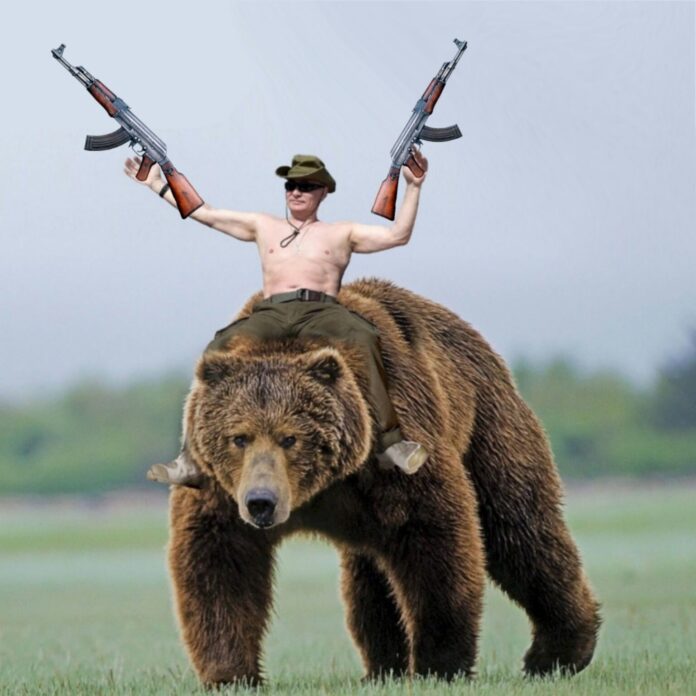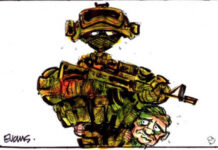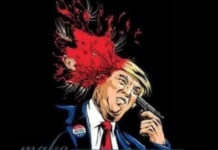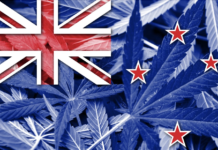Last article discussed the importance of ‘time’ on this war, describing how both sides are racing to build combat power ready for the northern summer, while simultaneously trying to prevent their enemy doing the same thing. Russia using its long-range missiles to strike supply routes bringing NATO aid into the east of the country. Ukraine by launching an offensive in the north-east, forcing the Russians to divert forces from defending other areas and preventing Russia from taking combat troops out of the frontline for rest and re-constitution. Any offensive requires concentration of forces at one point on the battlefield and if every available soldier is on the frontline defending territory, then there is not a reserve of ‘fresh’ soldiers ready for offensive operations.
This is why, the last article suggested keeping a close watch on the Ukrainian offensive pushing north and east from Kharkov. In the last couple of days, this offensive continues to push closer to the Russian border and east towards the supply route that runs from Belgorod in Russia, to Russia’s key base at Izyum. The Ukrainians have pushed Russian field artillery out of range of Kharkov. Recently, it has been reported that Ukrainian artillery is close enough to shell the rail line linking Belgorod and Izyum. Further, we are seeing a pattern of as yet unsubstantiated reports of Russian withdrawals, discipline failures and lack of motivation similar to what we saw before the collapse of the Kiev offensive.
In this part of the war rivers and railways bisect the ground, rivers tending to run roughly north -south and railways east-west and both are crucial to the prosecution of this war. Russia needs railways to supply it soldiers and rivers create barriers that require forces to either capture existing bridges or build new ones. The Ukrainian thrust to the east is moving roughly along the Severskyi-Donets River River towards Izyum. Some uncorroborated Russian reports put Ukrainian forces close to Izyum, trying to cross the Severskyi-Donets River as it loops west near a village called Chepil about 20km from Izyum. If Ukrainian forces are this close to Izyum, then it is under direct threat, field artillery fires about 20km. The other interesting point is that the terrain between Chepil and Izyum is close country, boggy and wooded, well suited to Ukraine’s very effective light infantry. If this report is correct then it may indicate that the Ukrainian offensive will use this complex terrain to advance on Izyum. Ukrainian light infantry is more effective in close country than Russia’s armour heavy forces. If the Russian hub at Izyum falls (or perhaps is threatened) it will be a significant problem and may be a catalyst for collapse and retreat in this area.
Currently, the Russians are advancing from Izyum towards Kramatorsk and Sloviansk on two axis’s directly along the M03 motorway and south west 30km, roughly towards Barvinkov in a ‘right hook’ (See ‘Converting international support into action and what the Russians are looking at doing next’ for more detailed discussion about these options) and were making progress before the Ukrainian offensive started in the north. It is a safe deduction that they are slowing down because of the Ukrainian operation drawing forces away from the front to defend the supply line behind them.
Further east fighting is still reported near Severodonetsk and Lysychansk as the Russians continue to try and advance south-west from Rubizhne, Kreminna. Although, Russian forces captured Popasna a couple of days ago there is little movement in this area and it is highly unlikely that this situation will change. The Ukrainians in this area are very well-prepared and dug-in and the Severskyi-Donets River provides a defensive barrier to Russia’s forces advancing west.
In the north-east, the Russians are active along a front roughly 280km long that arcs from Kharkov in the north, south east through Izyum, to Rubizhne, Kreminna and Popasna in the east. In the north-east the tactical mathematics is simple every Russian solider diverted to defend the area north of Izyum is one less soldier available to attack Kramatorsk, Sloviansk, Severodonetsk and Lysychansk. Each of these four towns is important because they are either rail hubs, contain bridges or both. A successful offensive requires holding these major towns with their vital rail junctions and bridges.
Further, Russian forces are still active in the south and fighting in Mariupol and between Mykolaiv and Kherson is also soaking up forces. Ukraine’s offensive could impact on this sector too, drawing much needed soldiers away from the area to defend Izyum, or even perhaps Belgorod. Tactically, the key issue that the Russians have is that until they contain Ukraine’s offensive, it will be impossible to start preparing reserves for a transition to more mobile armoured operations in the summer. Either to gain more territory or as a reserve to thwart Ukrainian offensives in the summer.
If the tactical picture is gloomy for the Russians, the strategic picture is no better with Sweden and Finland both keen to join NATO. The militaries of both nations are large, very well equipped and well trained. The Finnish border with Russia is almost 1500km long and Sweden’s naval and air forces will add considerably to NATO’s naval dominance of the Baltic. Further, NATO allies continue to commit more support to Ukraine. The United States in particular providing enormous amounts of financial support and the United Kingdom demonstrating its resolve to support the expansion of NATO. Even Germany long silent in international relations is starting to play a more vocal and direct role in discussions and is supplying artillery, tanks and training to Ukraine.
The interface between strategy and tactics is important and is the crux of Putin’s dilemma. Tactically, he is losing in Ukraine and is running out of time, Victory Day provided an opportunity to make an emotive ‘call to arms’ and rally Russia to increase the war effort. That Putin did not do this is interesting and there are three possible reasons why he did not:
- Incompetence, the least likely but should be considered. Putin, may believe his generals who in turn may be giving him poor advice. Would you want to be the general telling him that you were failing?
- Other options are already being considered for instance nuclear weapons or escalating the war into other areas.
- He knows that expanding the war would be politically unsafe for him.
The first option is highly unlikely because regardless of his general’s advice Putin is by all accounts a smart and calculating man. We can be sure that he understands the tactical situation and it is not reasonable to give credence to reports of him being crazy, unhinged because of steroid use or suffering from other diseases. In fact the best analysis I have seen of Putin is from Alexander Stubb, an ex-Finnish Prime Minister, who has met Putin and is very clear that these rumours should not be given credence. He describes Putin as cold, calculating and smart.
The second option, entered the public discourse this week when the United States Director of National Intelligence, Avril Haines told a Senate Committee hearing that the situation was ‘unpredictable’. Russia was clearly losing the war and some sort of escalation is likely to prevent this happening. Although it was felt that Putin would likely bide his time waiting for NATO resolve to weaken before making a significant move.
The use of nuclear weapons has always been an option. Russian strategic discussions have included the use of nuclear weapons to ‘escalate to deescalate’ or scare the United States and NATO away from a conflict by first use of nuclear weapons. However, the proven strategy for preventing escalation is deterrence. NATO’s ‘Tiger Team’ has been activated, a multi-national policy team responsible for assessing the risk of nuclear attack and developing NATO’s response. This preparation demonstrates that NATO’s resolve is strong. If Putin does use tactical nuclear weapons, we can expect a large NATO response. Imagine the impacts of a NATO no-fly zone, pre-emptive attacks by NATO against sites used to store tactical nuclear weapons, increases in NATO support to Ukraine and even more crippling international sanctions. The fact is that NATO is ready, willing and able to fight is a strong deterrent because the alliance has the capability to end the war. Further, Russia would become even more of an international pariah. At this time Putin knows that using tactical nuclear weapons is not a good option.
This leaves strategic nuclear weapons, but use of these has ‘no winner’ so is highly unlikely, even if Putin was ‘crazy’ he would need to be in total control of his inner circle to use them and there is strong evidence that he is neither crazy nor in total control.
Could Putin, escalate the war in other ways? This is a may be an option but would take time and Putin has more pressing issues. First, he needs to consolidate and defend what he has already taken and rebuild his forces before there is any chance of pushing west towards Transnistria. This is why the Ukrainian offensive in the north potentially impacts so heavily on the strategic situation, Putin can’t escalate without troops and if they are defending Izyum and the Russian border they can’t be used elsewhere.
The third option underpins all of the previous discussion. It is most likely that Putin did not call for mobilisation or declare war on Ukraine because he does not have total political support. This tallies with him arresting key advisors in recent weeks and with the flow of high-quality intelligence to Ukraine, NATO and the United States throughout the war. Putin is likely constrained by this factor and needs to move carefully and slowly and it seems more likely that escalations will be ‘hidden’ from the Russian people perhaps special forces attacks in Transnistria, Moldova, Western Ukraine or even within Russia to build a pre-text for a mobilisation or thinning out existing garrisons in other areas to provide more soldiers.
So what can we expect to see in the next few days:
- Sweden and Finland will join NATO and there will be a period of Russian threats and possibly the movement of nuclear weapons or troops into to the area.
- The Ukrainian offensive in the north is still the most important tactical operation. Looking at the map it seems that the Ukrainians have a logical axis of advance from Chepil to Izyum through terrain suited to their forces, so we can predict that this area will become increasingly important in the next few days.
- Russia will continue to consolidate its hold on Kherson and the areas that it has captured in the south. We already have a pro-Russian leader calling for Russia to annex the area and this sort of activity will continue probably culminating in either an annexation or declaration of an ‘independent’ state.
- Across the wider front Russian activity will slow down and their main effort becomes defending and consolidating the area already taken.
- It is a risky prediction but it is possible that Russia will start looking to negotiate. It seems to be a sensible strategy because a negotiated settlement could secure the land they have taken. It could also drive a ‘wedge’ into NATO, splitting countries like France that has been keen to appease Putin and some other partners away from Britain and the United States who are more likely to back a return to the 24 February 2022 border. Putin, could use a negotiation to build a narrative of reasonableness in the face of United States aggression and get a strategic win at little military cost. However, he will need to do this soon before Ukraine is offensively capable and able to take back it’s territory by force.
In summary it is likely that the next couple of weeks could define the rest of this war, if the Ukrainians are successful in the north, it will require the Russians to retreat forcing another, even less credible explanation of how the Izyum offensive was a feint to distract from the main effort in Donbas. Even if the Russians stop the offensive, it will draw their combat power away from other areas slowing their progress even more. Most importantly either outcome reduces Russia’s ability to build the reserves they will need in about six weeks when the ground dries out and the long days of summer arrive and when it is likely that a replenished Ukrainian army with modern NATO artillery and tanks may be ready for offensive operations.
Ben Morgan is a tired Gen X interested in international politics. He is TDB’s Military analyst.





Allegedly the most important ground in the area is Popasna. It is the high ground and means Russia can now use artilary with direct visuals for 30-40 miles.
Krackov is of no interest (at the moment) to Russia, it is a side show and ‘a fake’ to keep Ukraine busy. where the Russians want them to be. Think purely propaganda material for NATO/USA.
If Finland joins NATO they break a 70’ish year treaty to stay neutral (with Russia), so expect Russia to get very pissed-off. LIke the 20+ years warning by Russia (after the 1997’ish AGREEMENT with NATO/USA) not to expand NATO eastwards (bar unified Germant issues).
So if Russia invades Finland, like the Ukraine, it’ll ALL BE THEIR OWN DOING, they had been well and truly warned.
….The USA are directing all this and are behind these proxy wars.
All war is hell and should be avoided. I’m no Russia fan and feel for the poor buggers in the Ukraine. Like Yemen, Syria, Somalia, Afghanistan, IRAQ,etc etc etc……they are American ‘murder of innocents’.
BUT, existential treats are ALWAYS reacted to. And this is WELL known in diplomatic circles.
Sweden is irrelevant in this. They allowed the Nazis to march across their country to invade Norway and have always been ‘sort of’ NATO members.
But let’s be honest here, USA is the puppet master causing all this and each side is doing what they have to, BECAUSE of that.
Expect Poland to invade Ukraine and seize ‘old territory’, but disguised as creating a safe buffer zone. Ineffect Russia and Poland carve up Ukraine. Think Poland, Germany and Russia at start of WW2.
All of course I.M H.O.
Follow ‘The Duran’ and Scott Ritter to get a more balanced view.
Russia won’t invade Finland. Not when they are in NATO. In any event Finland being in NATO is not an existential threat. It is not as if NATO is going to invade Russia through Finland. But it does mean another border that russia will want to strengthen.
However Russia will cut the Finns off from gas. Russia will also make it hard for Finland to do any business in Russia, which is still a major market for Finland.
I guess Finland has thought all this through and decided to join NATO anyway.
I am also pretty sure that the German Nazis didn’t cross Sweden to get to Norway. The Germans mounted seaborne invasions.
Hi Ivan
Listen to yourself Kevin. Finland can’t determine their own defence arrangements and you say they get what they deserve if they do? Having been invaded by Russians before and watching what’s happening now, maybe they don’t trust Putin?
By the way the agreement signed 70 years ago was dissolved in 1991 ( post Soviet break up) and I don’t think the replacement prevents Finland from joining another alliance.
It’s all a feint to divert attention from their attack on Moscow! LOL
and the chicken entrails say……. putin will develop super heat vision and storm the citadel of solitude.
and yes kev poland and the ukraine have a history of taking each others territory and doing a bit of ethnic cleansing while they’re at it.
This analysis of the war by Ben on here is first class and better than most retired officers on CNN and others.
As a defence person of 27 years I think I can give an opinion on this. One thing I can say, take any comment from a retired Colonel/Commodore/ Air Commodore or less with a grain of salt, they are failed officers who never made General/Admiral/Air Vice Marshal. The fact they are shooting their mouths off now is the reason why they were never promoted.
Yup great work again Ben and appreciate all your hard work.
Incredible racism coming out of Britain at the moment with refugees trying to enter the country being diverted to Rwanda, unless the refugee is Ukranian in which case they can settle in England. The UK government and the mess that is Boris aren’t even trying to disguise their selective xenophobia now. We can only hope Jacinda is better than this and treats everyone equally, and will therefore divert our Ukranian refugees to Rwanda (with their consent) as per British high command.
that’s the gammony brexshit mindset ethan….
Satan (Putin’s Russian) pursues the woman wearing a crown of 12 stars with the moon under her feet (the EU)
The Lamb/Child might have been conceived just recently
The Book of Revelation seems to have a lot to do with the end of the 3 top military powers vying for world domination
Satan (leota’s Samoan ) pursues the woman wearing a crown of 12 stars with the moon under her feet (the EU)
The Lamb/Child might have been conceived just recently
The Book of Revelation seems to have a lot to do with leota sex,, vying for world domination
**********************
‘
Satan (any old Arab) pursues the woman wearing a crown of 12 stars with the moon under her feet (the EU)
The Lamb/Child might have been conceived just recently
The Book of Revelation seems to have a lot to do with Sex and the EU priests
The Dragon (Satan) ‘makes war’. ‘Pursuing’ is not about sex
The Beast from the Earth (China), ‘speaks like a Dragon’. China spreads Pro-Russian propaganda
Also, in the time line we are passed the Third Woe (covid-19), or at least the onset of it, and some entity was due to pursue the EU in some way. So when Ukraine was invaded, it became clear that Putin’s Russia is probably Satan
The Lamb would be an alternative to the 3 military powers, and the one that prevails in the end
so basically revelations is a crock so open to individual interpretation that in effect it’s useless, never mind the fact it’s the product of clearly stoned goatherders in the first place.
The numbers also cause the interpretation to make sense, eg. 1260 days, 42 months, 200 million, 5 months, 3.5 days. Without these numbers I guess you could maintain doubt
I am not at all implying christianity is real. The source isn’t known
I am also not quite a believer in my interpretation. It would need to keep making sense according to actual events until we get to the end. From 1970s to beyond 1928
I meant to write ‘beyond 2028’
Woolly thinking.
touche…
Comments are closed.